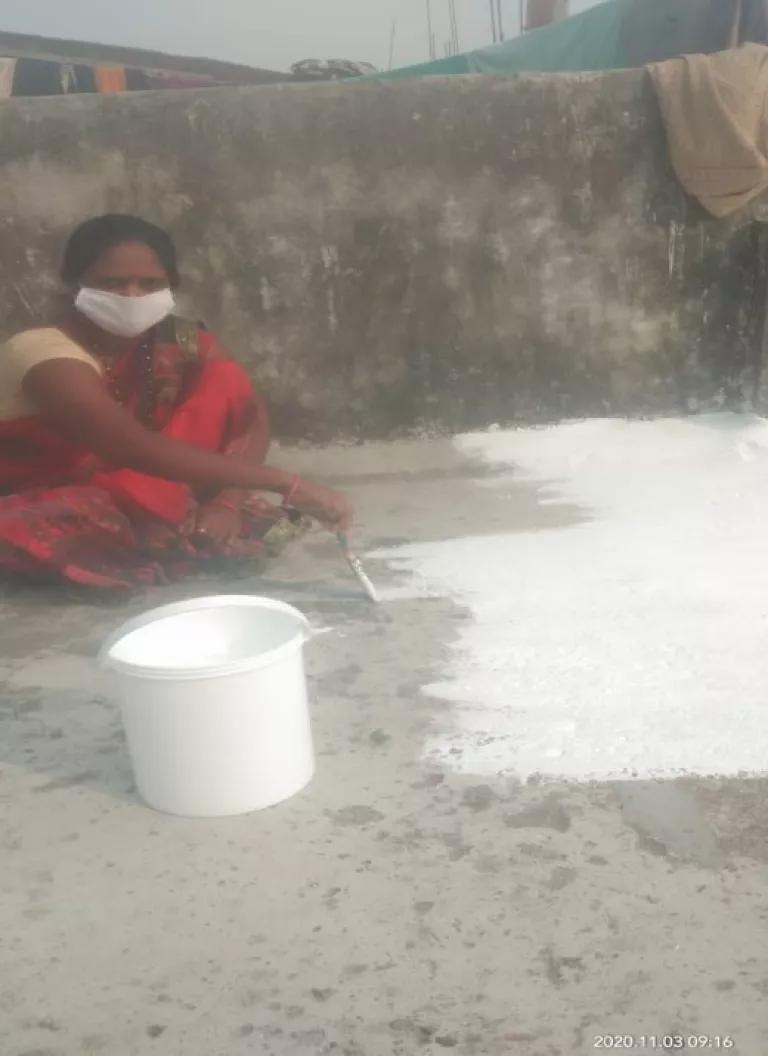Cool Roofs: Community-Led Initiatives in Four Indian Cities

Co-authored with Jessica Korsh
With climate change fueling higher temperatures, 2020 is essentially tied with 2016 as the hottest year on record. While fighting COVID-19, communities across India experienced sweltering heat last summer, temperatures reaching 47.5ºC in some parts of the country. In addition to raising temperatures, climate change and rising income levels increase the demand for cooling—leading to a rise in greenhouse gas emissions. Protecting the vulnerable from extreme heat in a severely climate affected country is critical. Cool roofs are one of the simplest and most cost-effective ways to fight the heat—as shown by community-led initiatives in four cities in India.
Cool roofs keep indoor temperatures lower and can help decrease the dependence on air conditioners. Cool roofs reflect sunlight and absorb less heat. Depending on the setting, cool roofs can help keep indoor temperatures lower by 2 to 5°C (3.6 to 9°F) as compared to traditional roofs.
As discussed in the Kigali Amendment – signaled for ratification by the Biden Administration this week—and the Indian Cooling Action Plan, cool roofs and energy efficiency solutions are key strategy for sustainable cooling and combating climate change. The benefits of cool roofs also include increased thermal comfort by keeping indoor temperatures lower, reduced and can help reduce future cooling demand from air conditioners as well as reduce air pollution since they save energy, especially on cooling appliances, such as fans and air conditioners.
Ahead of the 2021 heat season, NRDC and partners Mahila Housing Trust (MHT) painted the roofs of selected slum households with solar reflective paint. People living in slums and low-income communities are particularly heat vulnerable—a large percentage of their homes are far from optimal, with few options for cooling. The cool roof initiatives are in four cities—Jodhpur, Bhopal, Surat, and Ahmedabad. The households were selected based on the household’s electricity bill, having a tin roof, direct sunlight exposure, and number of household members sharing the space.
Benefits of the cool roofs and demonstrations:
- Save energy and reduce heat stress: painting slums roofs with solar reflective paint helped keep indoor temperatures lower by 2 - 5°C (3.6 - 9°F), compared to traditional roofs. The demonstrations also featured an energy savings component for the households by replacing incandescent bulbs with LED.
- Outreach on cool roofs as heat mitigation technology: the demonstrations acted as an outreach tool to spread the word to the larger community. The demonstrations covered more than 460 roofs and reached 13,587 households and 67,935 individuals with information on solar reflective paint.
- Skill development of households: MHT has local community workers that train the household to paint their own cool roof. This saves the labor costs and builds the household’s capacity by learning the skill.
Ahead of the 2021 heat season, cities, states and the national government are taking steps to protect communities and save energy costs, through cool roof programs. The city of Ahmedabad is likely to resume its target to paint 15,000 slum roofs with cool paint. Telangana, in collaboration with NRDC and partners, is expected to release a cool roofs policy. Through these community-led cool roof initiatives ahead of the upcoming heat season, cities have time to implement programs and prepare vulnerable households for extreme heat, save energy and combat climate change.

Prima Madan is a clean energy expert working as a consultant with NRDC's India team. Jessica Korsh is a former NRDC Duke Stanback Fellow.
